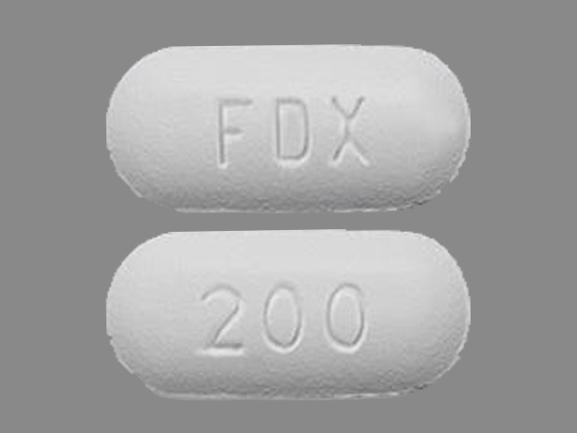Fidaxomicin Side Effects
Medically reviewed by Drugs.com. Last updated on Apr 1, 2023.
Applies to fidaxomicin: oral powder for suspension, oral tablet.
Serious side effects of Fidaxomicin
Along with its needed effects, fidaxomicin may cause some unwanted effects. Although not all of these side effects may occur, if they do occur they may need medical attention.
Check with your doctor immediately if any of the following side effects occur while taking fidaxomicin:
Less common
- Abdominal or stomach pain
- bloating
- bloody or black, tarry stools
- chills
- confusion
- cough
- drowsiness
- fever
- loss of appetite
- lower back or side pain
- muscle tremors
- nausea
- painful or difficult urination
- pale skin
- rapid, deep breathing
- restlessness
- severe constipation
- shortness of breath
- sore throat
- stomach cramps
- troubled breathing with exertion
- ulcers, sores, or white spots in the mouth
- unusual bleeding or bruising
- unusual tiredness or weakness
- vomiting
- vomiting of blood or material that looks like coffee grounds
Incidence not known
- Difficult or labored breathing
- itching skin or rash
- large, hive-like swelling on the face, eyelids, lips, tongue, throat, hands, legs, feet, or sex organs
- tightness in the chest
Other side effects of Fidaxomicin
Some side effects of fidaxomicin may occur that usually do not need medical attention. These side effects may go away during treatment as your body adjusts to the medicine. Also, your health care professional may be able to tell you about ways to prevent or reduce some of these side effects.
Check with your health care professional if any of the following side effects continue or are bothersome or if you have any questions about them:
Less common
- Abdominal or stomach distension or tenderness
- acid or sour stomach
- belching
- blurred vision
- difficulty with swallowing
- dry mouth
- excess air or gas in the stomach or intestines
- flushed, dry skin
- fruit-like breath odor
- full feeling
- heartburn
- increased hunger
- increased thirst
- increased urination
- indigestion
- passing gas
- stomach discomfort or upset
- sweating
- troubled breathing
- unexplained weight loss
For Healthcare Professionals
Applies to fidaxomicin: oral granule for reconstitution, oral tablet.
Gastrointestinal
Very common (10% or more): Nausea (up to 11%)
Common (1% to 10%): Vomiting, abdominal pain, diarrhea, constipation, gastrointestinal hemorrhage, upper abdominal pain
Uncommon (0.1% to 1%): Abdominal distension, flatulence, dry mouth
Frequency not reported: Abdominal tenderness, dyspepsia, dysphagia, intestinal obstruction, megacolon, lower abdominal pain[Ref]
Metabolic
Common (1% to 10%): Hypokalemia, hyperkalemia, hypomagnesemia
Uncommon (0.1% to 1%): Anorexia, decreased appetite
Frequency not reported: Hyperglycemia, metabolic acidosis[Ref]
Nervous system
Common (1% to 10%): Headache, dizziness
Uncommon (0.1% to 1%): Dysgeusia[Ref]
Other
Common (1% to 10%): Pyrexia, peripheral edema, fatigue
Uncommon (0.1% to 1%): Chills
Frequency not reported: Increased blood alkaline phosphatase, decreased blood bicarbonate[Ref]
Genitourinary
Common (1% to 10%): Urinary tract infection[Ref]
Hematologic
Common (1% to 10%): Anemia, neutropenia
Frequency not reported: Decreased platelet count[Ref]
Hypersensitivity
Postmarketing reports: Hypersensitivity reactions (dyspnea, angioedema, rash, pruritus)[Ref]
Respiratory
Common (1% to 10%): Dyspnea, pneumonia[Ref]
Psychiatric
Common (1% to 10%): Insomnia[Ref]
Cardiovascular
Common (1% to 10%): Hypotension[Ref]
Dermatologic
Common (1% to 10%): Pruritus
Uncommon (0.1% to 1%): Rash
Frequency not reported: Drug eruption, urticaria, follicular rash, maculopapular rash, exfoliative rash[Ref]
Musculoskeletal
Common (1% to 10%): Back pain[Ref]
Hepatic
Uncommon (0.1% to 1%): Increased ALT
Frequency not reported: Increased hepatic enzymes, increased AST[Ref]
More about fidaxomicin
- Check interactions
- Compare alternatives
- Reviews (19)
- Dosage information
- During pregnancy
- Drug class: macrolides
- Breastfeeding
- En español
Patient resources
Other brands
Professional resources
Other brands
Related treatment guides
References
1. Cerner Multum, Inc. UK Summary of Product Characteristics.
2. Cerner Multum, Inc. Australian Product Information.
3. Product Information. Dificid (fidaxomicin). Optimer Pharmaceuticals. 2011.
Further information
Always consult your healthcare provider to ensure the information displayed on this page applies to your personal circumstances.
Some side effects may not be reported. You may report them to the FDA.

